There are 6 main characteristics of your cats' appearance that will help you identify their breed.
Click on the below characteristics to skip directly to the attribute you believe is most distinctive from your cat:
BODY SIZE
The size of a cat's body is a vital clue in determining its breed. Throughout history, cats were bred for specific environments, with some requiring larger bodies for cold climates and others smaller, agile forms for hunting.
Over time, breeders established standards, with size being a defining trait. For instance, the large Maine Coon contrasts starkly with the petite Singapura. It's not just overall size that matters; the bone structure and muscle mass also provide hints about a cat's lineage.
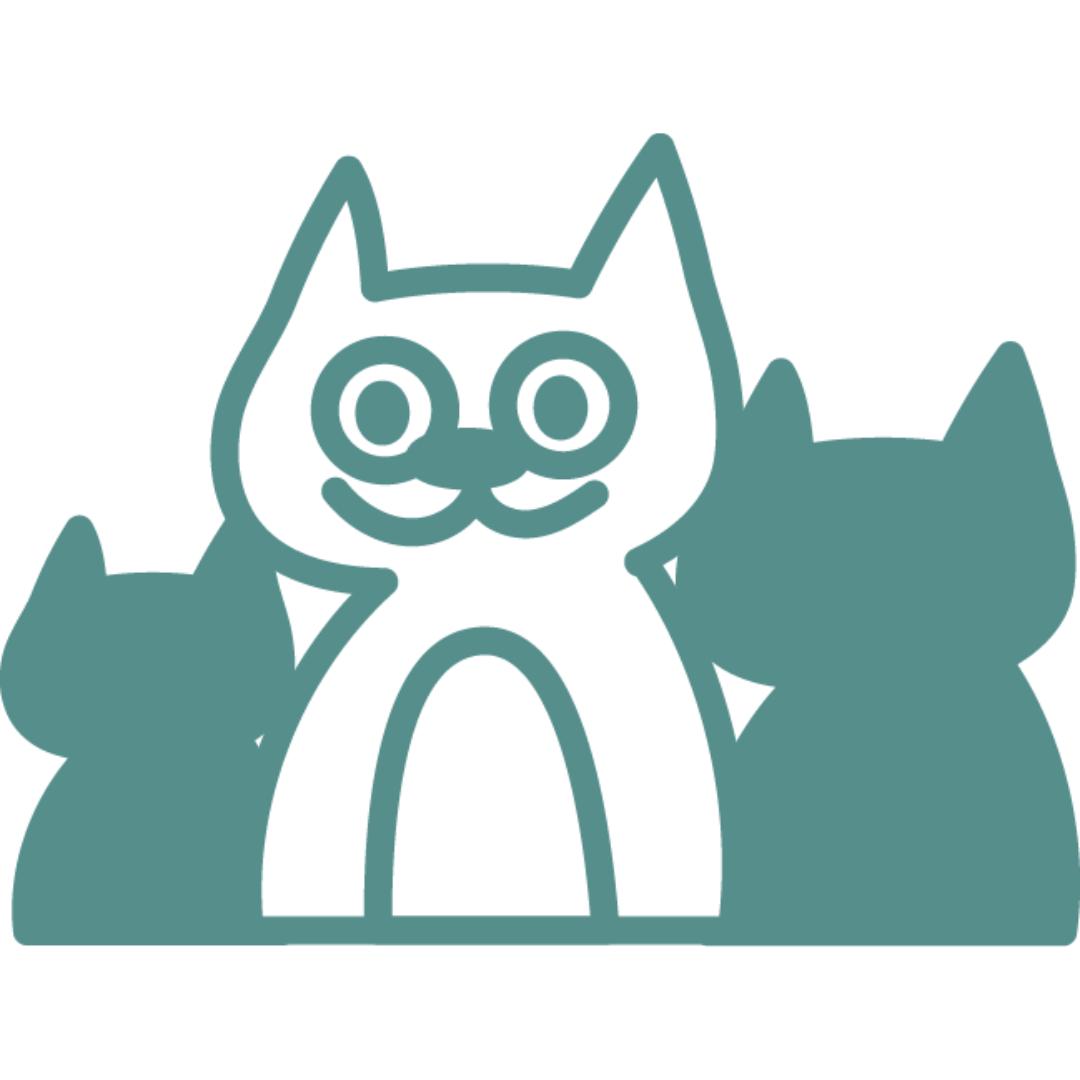
Large Cats

Medium-Sized Cats
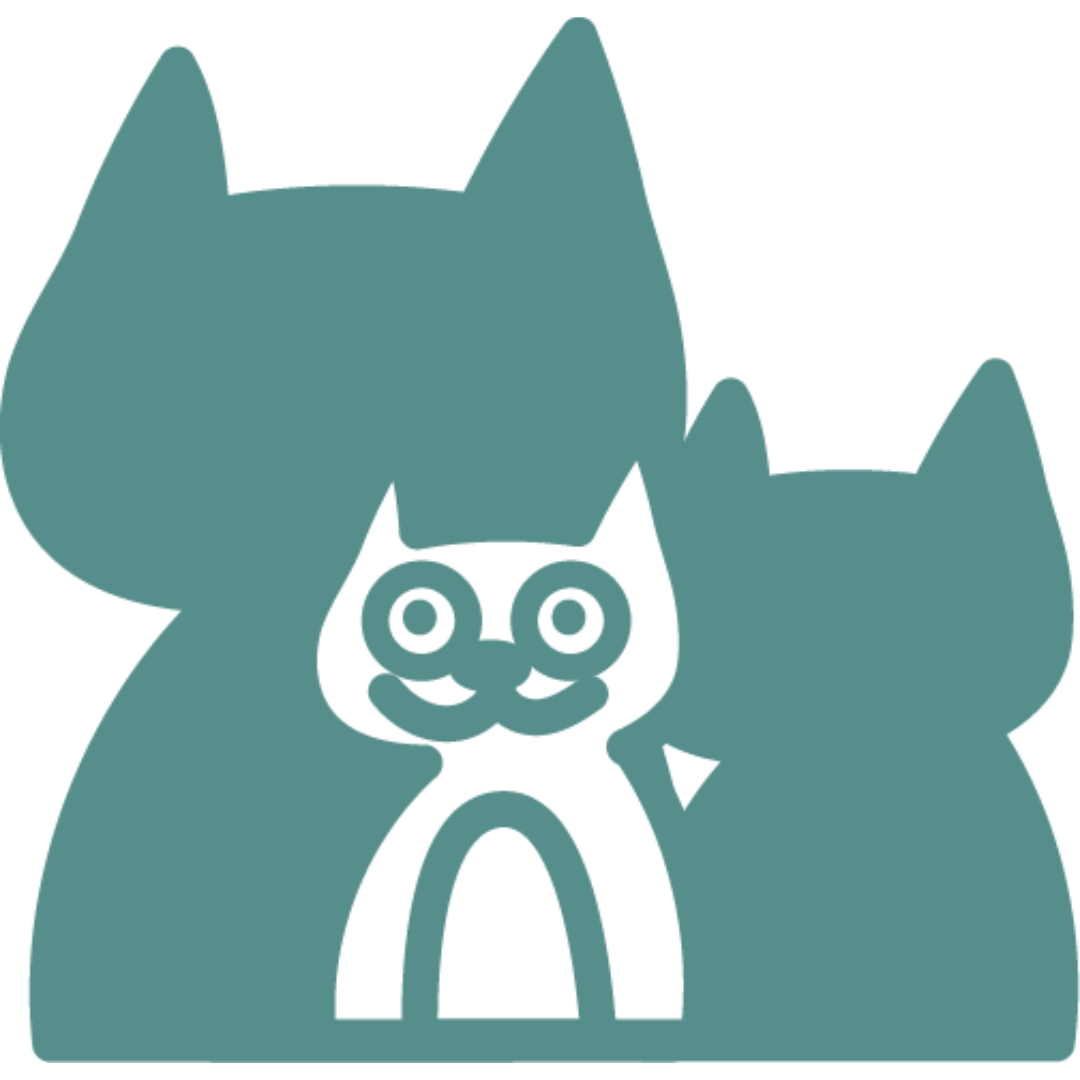
Small Cats
Large Cat Breeds
- Maine Coon - Distinctive for their long tufted ears, bushy tails, and muscular build. Often sport a ruff of fur around their neck.
- Ragdoll - Possess a fluffy semi-longhair coat, deep blue eyes, and a soft colorpoint pattern.
- Norwegian Forest Cat - Notable for their double-layered, water-resistant coat that's thick and lush, especially around the neck area.
- Siberian - Showcases a thick, water-resistant triple coat and tufted ears, giving them a rugged appearance.
- British Shorthair - Easily recognized by their round face, dense coat, and stocky build; often seen in a blue-gray color but come in other shades too.
- Bengal - Their sleek, muscular body is adorned with large rosette patterns, making them resemble wild leopards or ocelots.
- Savannah - Tall and slender, they have large pointed ears and a coat patterned with bold dark spots and stripes.
- Chausie - Display a lean and elongated body, with a wild appearance highlighted by their large ears and agouti-patterned coat.
- Ragamuffin - Exhibits a silky coat and round eyes. Their body is solid and broad, creating a robust impression.
- Chartreux - Characterized by a robust, muscular frame, round eyes, and a short, dense coat, typically seen in a blue-gray hue.
Medium Cat Breeds
- Siamese - Sleek, slim body with large almond-shaped blue eyes and a short coat showcasing color points on ears, face, paws, and tail.
- Abyssinian - Ticked coat pattern, arched back, large pointed ears, and almond-shaped eyes.
- Scottish Fold - Rounded face with folded ears, dense coat, and a short to medium-length tail.
- American Shorthair - Muscular build, round face with short nose, and a thick coat of various colors and patterns.
- Oriental Shorthair - Sleek and svelte body, large bat-like ears, and a short, fine coat in various colors and patterns.
- Sphynx - Hairless with wrinkles, muscular body, large ears, and a potbelly.
- Tonkinese - Muscular yet slender body, oval-shaped blue or green eyes, and a medium-length coat.
- Birman - Semi-long hair, deep blue rounded eyes, white "gloves" on paws, and color points like the Siamese.
- Russian Blue - Short, dense blue-gray coat, rounded head with green eyes, and slender body.
- Turkish Van - Semi-long hair, muscular body, and a distinct color pattern with color primarily on the head and tail.
Small Cat Breeds
- Singapura - Short, sleek coat with ticked tabby pattern, large almond-shaped eyes, and petite, muscular body.
- Cornish Rex - Curly, short coat, tall ears, arched back, and a slender, muscular frame.
- Devon Rex - Short, wavy coat, large low-set ears, and a slightly rounded belly.
- American Curl - Distinct curled back ears, short to long hair, and a rounded head with walnut-shaped eyes.
- Munchkin - Short legs, round face, and a medium-length coat that can be either short or long.
- LaPerm - Curly coat, ranging from tight ringlets to long corkscrew curls, with a slender body.
- Cymric - Tailless or short-tailed, rounded body, and a double coat that can be short or long.
- Manx - Tailless or with a stubby tail, rounded body, and a double coat which can be of various colors and patterns.
- Korat - Short, glossy blue-gray coat, heart-shaped face, and large round green eyes.
- Japanese Bobtail - Distinctive short, "pom-pom" tail, slender body, and a medium to long coat with various patterns and colors.
HAIR LENGTH & SHAPE
The length of a cat's hair is another crucial indicator in identifying its breed. Historically, the environments in which cats thrived greatly influenced their coat lengths. Cats from colder regions developed longer, dense furs as insulation against the cold, while those from warmer climates sported shorter coats for better heat regulation.
As breeding practices evolved, hair length became an established standard for different breeds. The fluffy Persian, with its thick long hair, is easily distinguishable from the sleek, short-haired Siamese.
Beyond mere appearance, the hair length can offer insights into a cat's genetic background and the environmental challenges its ancestors faced.
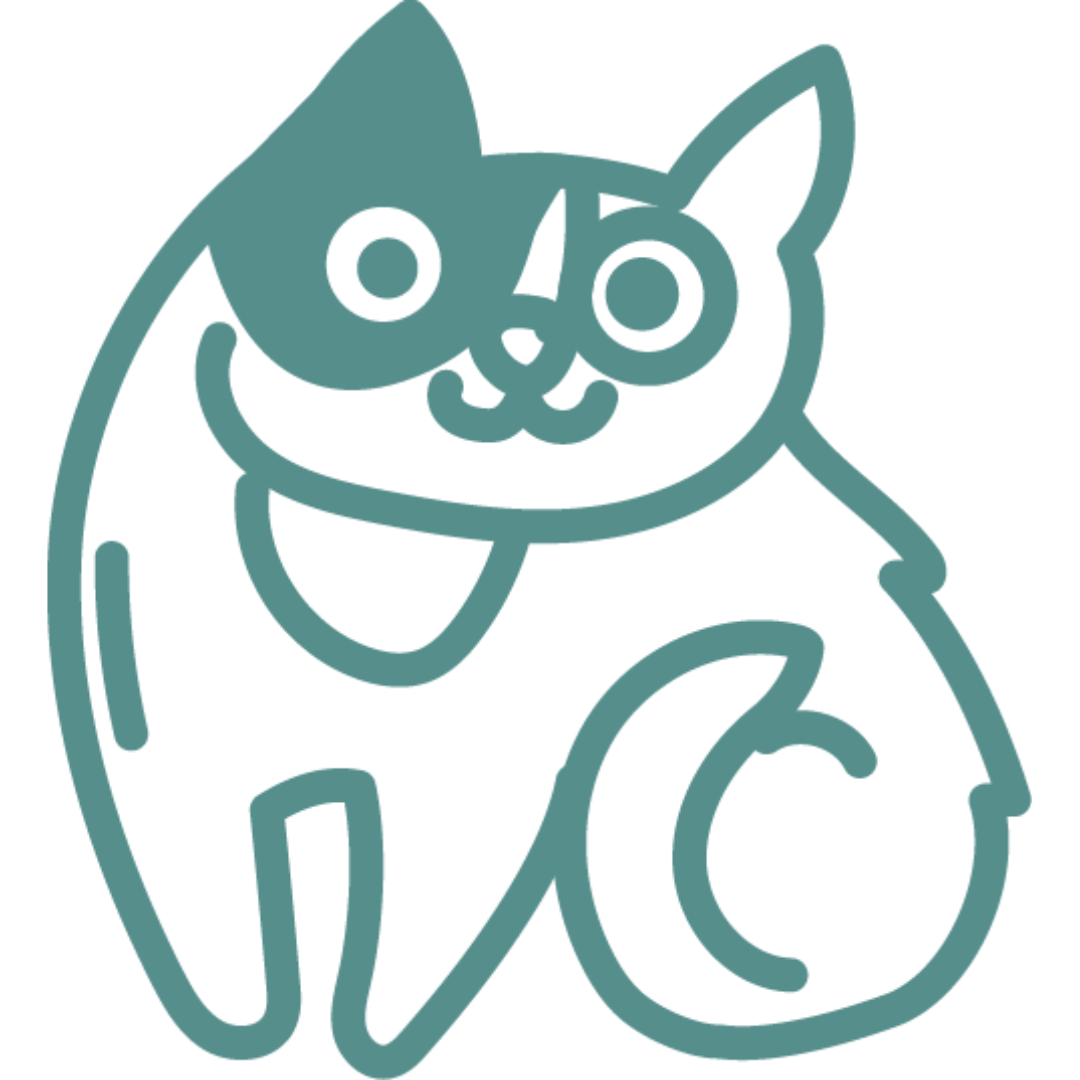
Short Hair

Long Hair
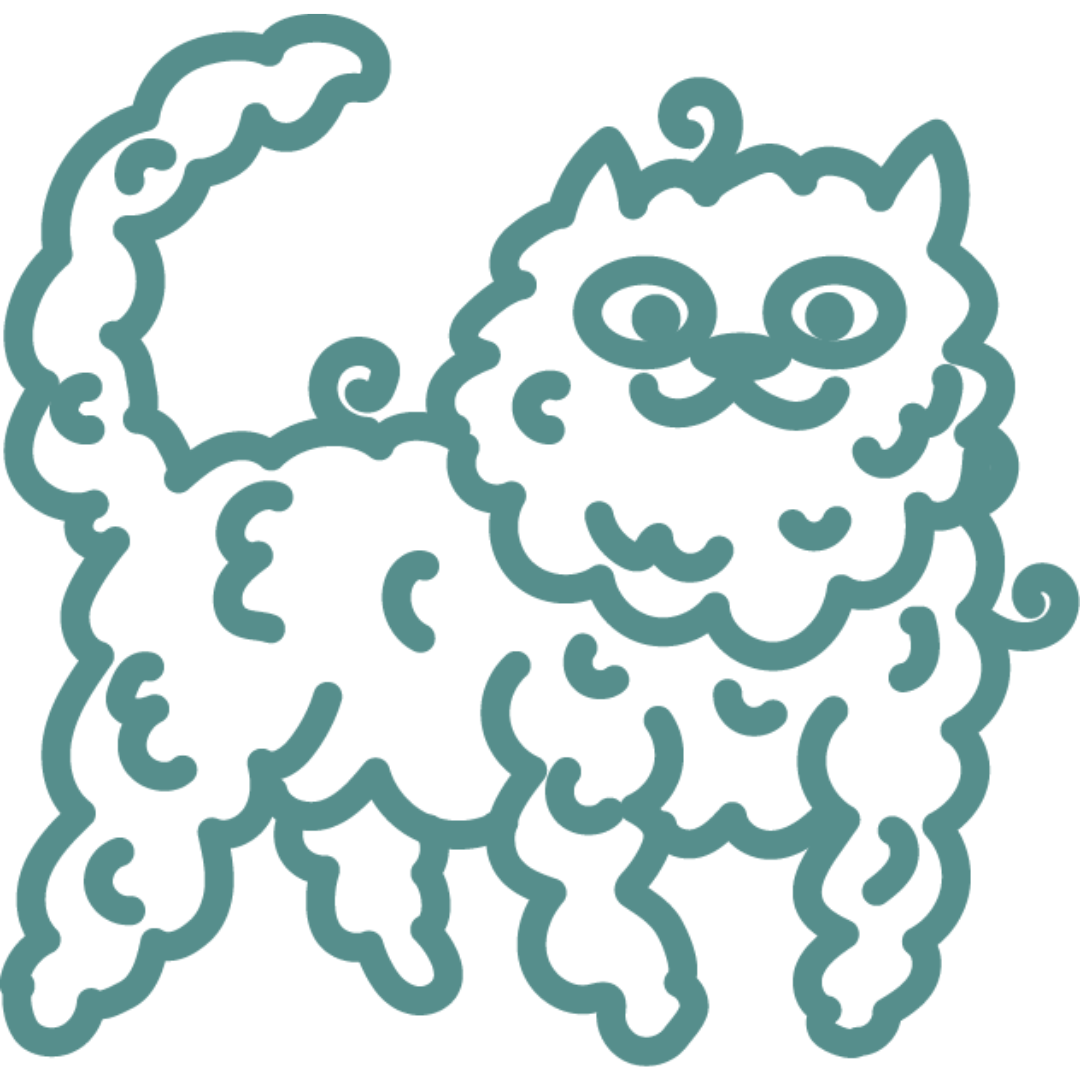
Curled Hair

No Hair
Short-Haired Cat Breeds
- American Shorthair: Recognizable by its sturdy physique, rounded face, and prominent eyes.
- British Shorthair: Features a thick, soft coat, a circular face with full cheeks, and a robust frame.
- Bengal: Sports a glossy coat adorned with pronounced spots resembling a leopard's or marbled designs.
- Sphynx: Distinguished by its nearly bald appearance, textured skin, and pronounced, bat-like ears.
- Oriental Shorthair: Has a lean form, eyes shaped like almonds, and notably large, tapered ears.
- Siamese: Characterized by its sleek, lean figure, contrasting color points, and striking blue eyes in an almond shape.
- Manx: Known for its spherical silhouette and a notably short tail or sometimes no tail at all.
- Scottish Fold: Unique for its distinct folded ears, a round face, and a well-proportioned frame.
- Abyssinian: Displays a ticked fur design, elongated legs, and prominently sized, attentive ears.
- Russian Blue: Stands out with its rich blue-gray fur, eyes of a green hue in almond shape, and an elegant physique.
Long Haired Cat Breeds
- Maine Coon - Thick, flowing mane, tufted ears, bushy tails, and a sturdy bone structure.
- Persian - Luxurious long coat, flat, round face with large eyes, and a short muzzle.
- Ragdoll - Soft, silky semi-longhair, blue almond-shaped eyes, and a sturdy body.
- Norwegian Forest Cat - Dense, water-resistant top coat, bushy tail, and almond-shaped eyes.
- Siberian - Thick, three-layered coat, round eyes, and a robust body.
- Himalayan - Color-pointed long coat, round face with blue eyes, and short legs.
- Birman - Medium-length, silky coat with color-pointed patterns, round blue eyes, and a strong body.
- Angora - Fine, silky longhair, tufted ears, and almond-shaped eyes.
- Ragamuffin - Plush, dense coat, rounded face, and large, expressive eyes.
- Domestic Longhair - Various coat colors and patterns, thick fur, and a fluffy tail.
Curly Haired Cat Breeds
- Cornish Rex - Short, soft, wavy fur with a sleek appearance and prominent cheekbones.
- Devon Rex - Short, curly fur, with a distinctive wedge-shaped head and large ears.
- LaPerm - Both long and short-haired varieties with tight curls, large flared ears, and almond-shaped eyes.
- Selkirk Rex - Plush, curly coat; can be long or short-haired, with a rounded head and full cheeks.
- American Wirehair - Distinct crimped or curly fur texture with a sturdy build and rounded eyes.
Hairless Cat Breeds
- Sphynx - Not truly hairless, but with a fine layer of peach-fuzz-like coat, wrinkled skin, and large ears.
- Donskoy - Originated in Russia, with wrinkled skin, almond-shaped eyes, and pronounced cheekbones.
- Elf Cat - A cross between the Sphynx and the American Curl, they inherit the hairlessness of the Sphynx and the curled ears of the American Curl.
- Peterbald - Another Russian breed with a range from bald to a fine coat; they have a slender, muscular body and a distinct head shape.
- Ukrainian Levkoy - Unique with their folded ears and a mostly hairless body, they have a dog-like personality.
COAT PATTERN
The coat pattern of a cat is a significant factor in pinpointing its breed. Historically, these patterns were outcomes of camouflage needs. Cats in dense forests or tall grasses evolved with stripes and spots, aiding them in blending seamlessly into their surroundings, while those in more open terrains might have simpler, solid coats.
With the progression of selective breeding, specific coat patterns became synonymous with certain breeds. The spotted Bengal or the striped Maine Coon are prime examples of this.
These coat patterns not only enhance the beauty and uniqueness of a cat but also shed light on its genetic lineage and the survival strategies of its predecessors.
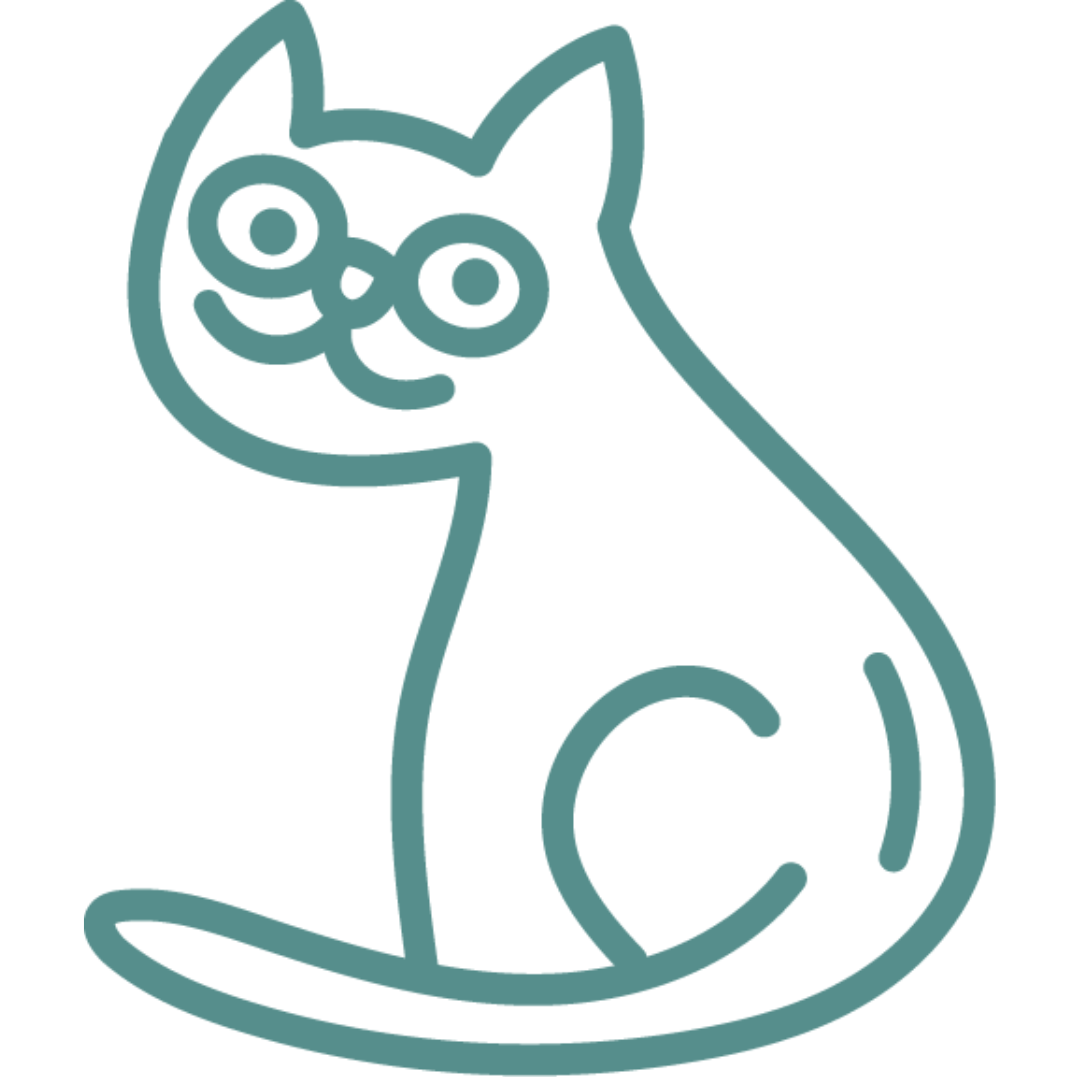
Solid (or Self)
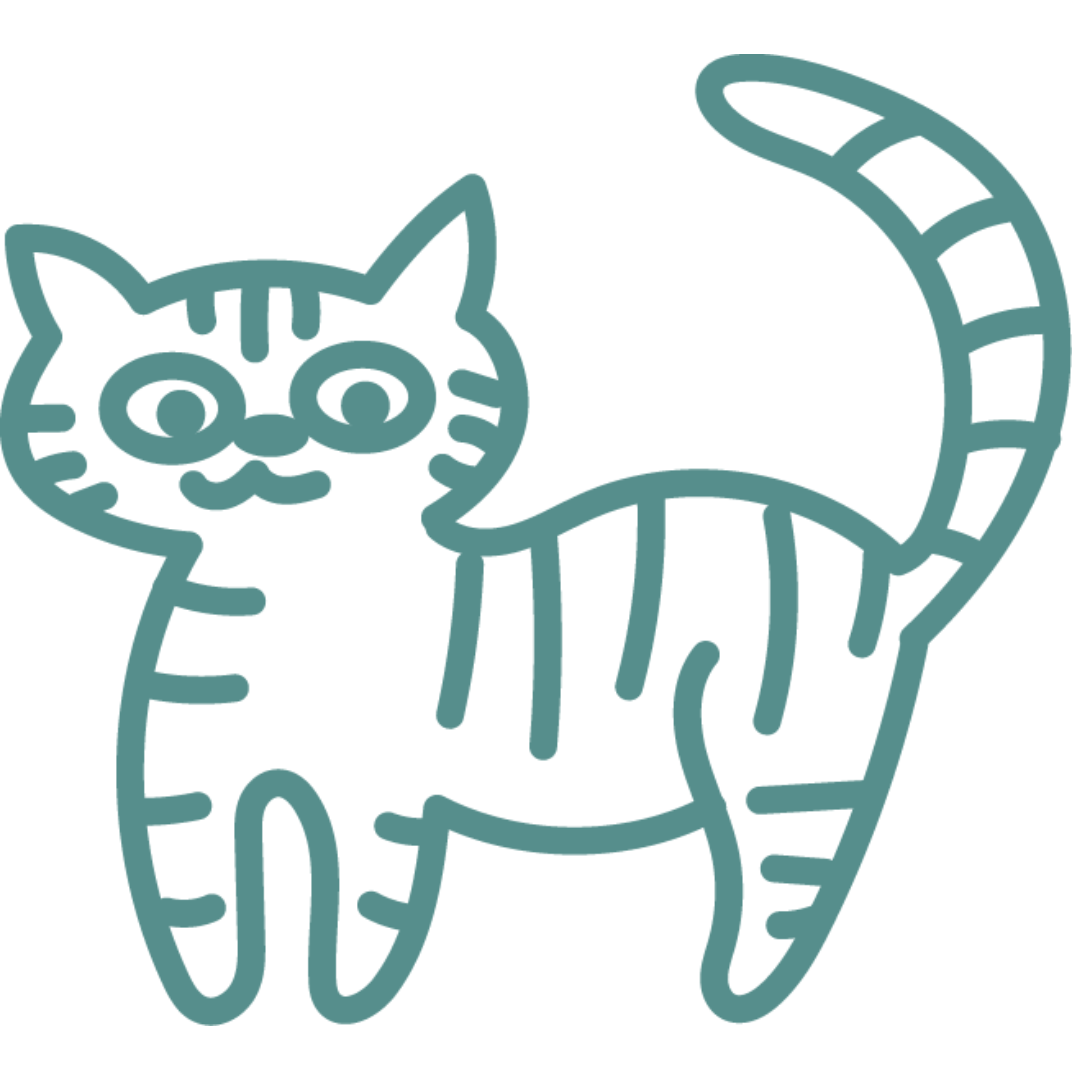
Tabby

Spotted

Pointed
Solid Coat Pattern Cat Breeds
- British Shorthair - Often seen in a solid blue-grey, they have a round face and dense, plush coat.
- Scottish Fold - Known for their unique folded ears, they can be seen in solid colors like white, blue, and black.
- Burmese - Muscular cats that frequently come in solid sable or dark brown, with round heads and expressive eyes.
- Russian Blue - Elegant cats with a solid blue-grey coat, fine bones, and striking green eyes.
- Korat - Originated from Thailand, they have a short, glossy solid blue coat and heart-shaped face.
- Chartreux - A muscular breed with a solid blue short coat, deep chest, and fine-boned limbs.
- Exotic Shorthair - Often seen in solid colors, they resemble the Persian with a flatter face and dense coat, but have shorter hair.
- Manx - Recognizable by their taillessness or short tail, they can be found in various solid colors.
- Ceylon - Originated from Sri Lanka, they have a medium-sized build and can be seen in solid cinnamon, fawn, or chocolate.
- American Shorthair - Known for their diverse color patterns, but they can be found in solid colors like white, black, and blue.
Tabby Coat Pattern Cat Breeds
- Maine Coon - Often seen with a tabby pattern; they have long tufted ears, bushy tails, and a robust structure.
- American Shorthair - Known for their classic silver tabby pattern; they have a round face and sturdy build.
- Bengal - Their coat often resembles a wild leopard or ocelot with tabby-like rosettes and spots.
- Ocicat - A breed known for its wild appearance, showcasing large tabby spots that resemble a wild cat.
- Domestic Shorthair - The most common household cat, often seen in mackerel, classic, or spotted tabby patterns.
- Manx - Can be seen in tabby patterns; recognizable by their taillessness or short tail.
- Norwegian Forest Cat - With a thick double coat, they're often found in a variety of tabby patterns.
- Siberian - Originated from Russia; they often have a dense tabby-patterned coat.
- Exotic Shorthair - Resembling the Persian with a flatter face, they can be found in tabby patterns with shorter hair.
- Ragamuffin - Related to the Ragdoll, these large cats can have tabby patterns in their silky fur.
Spotted Coat Pattern Cat Breeds
- Bengal - Displaying wild leopard-like rosettes and spots on a sleek body.
- Ocicat - Created to resemble a wild ocelot, showcasing large spots scattered across its body.
- Egyptian Mau - Recognized for their random and distinctive spots, which give them a graceful, cheetah-like appearance.
- Savannah - A blend of domestic cats and servals, they have bold and pronounced spots resembling their wild counterparts.
- Cheetoh - A newer breed, derived from Bengals and Ocicats, showcasing a distinct spotted pattern.
- Serengheti - Designed to resemble wild African cats, with large, round spots scattered across their body.
- Leopardette - Known for their striking coat with bold spots, reflecting their name's implication.
- Spotted Mist - Displaying even and distinct spots, adding charm to their gentle demeanor.
- Ashera - A hybrid breed, often having a luxurious coat with large, dramatic spots.
- Chausie - Although they can come in other patterns, many display wild-looking spots reminiscent of jungle cats.
Pointed Coat Pattern Cat Breeds
- Siamese - Recognized by their almond-shaped blue eyes and contrastingly dark points on a sleek, fine-boned body.
- Ragdoll - Large and fluffy with blue eyes and soft pointed colors against a lighter body coat.
- Himalayan - A combination of Persian and Siamese traits, they have long, plush fur with distinct points and deep blue eyes.
- Birman - Medium to large size with a silky coat, deep blue eyes, and contrasting points on their face, ears, legs, and tail.
- Balinese - A long-haired version of the Siamese, showcasing the same striking blue eyes and pointed pattern.
- Colorpoint Shorthair - Similar to the Siamese in appearance but comes in various point colors and patterns.
- Javanese - Bearing resemblance to the Balinese, they possess a medium-length coat, blue eyes, and distinct points.
- Oriental Longhair - While they can have solid colors, many display the pointed pattern combined with their slender body and tufted ears.
- Thai - Often described as the traditional Siamese, they have a moderately rounded body with well-defined points.
- Foreign White - A full white body but with the classic Siamese structure and blue eyes, often mistaken for a solid but carrying the pointed gene.
FACE SHAPE
Not every cat's facial structure clearly indicates its breed. Yet, specific face shapes can significantly narrow down breed possibilities, making certain cats more readily identifiable with a particular lineage.
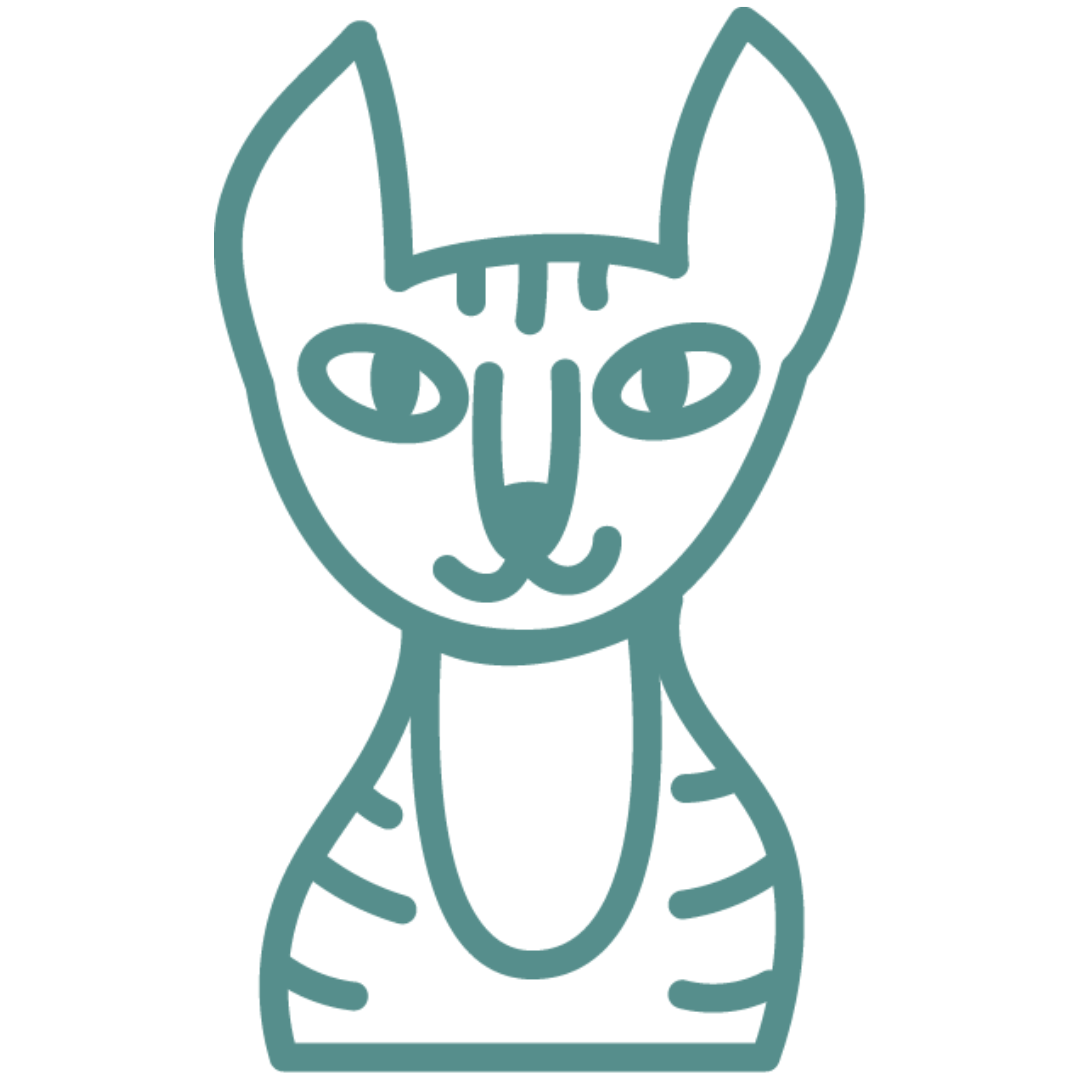
Narrow Face

Flat Face
Narrow-Faced Cat Breeds
- Oriental Shorthair - Known for their long, slender bodies and wedge-shaped heads, accentuated by large, bat-like ears.
- Siamese - Characterized by their refined, elongated faces, almond-shaped blue eyes, and contrastingly dark points.
- Foreign White - Possessing the classic Siamese structure, they stand out with their all-white body and blue eyes against a delicate, narrow face.
- Cornish Rex - Features a slender face with high cheekbones and large ears that give them a distinctive appearance.
- Devon Rex - Recognized by their short, wavy fur and a strikingly narrow face with large, low-set ears.
- Sphynx - Although hairless, their facial structure is notably narrow with prominent cheekbones and large ears.
- Colorpoint Shorthair - A variation of the Siamese, they retain the same narrow face but come in various point colors and patterns.
- Russian Blue - Their elegant, narrow face is complemented by a short, dense coat of bluish-grey and vivid green eyes.
- Singapura - One of the smallest cat breeds, they possess a petite structure with a gently narrow face and large, expressive eyes.
- Peterbald - Originating from Russia, these cats can range from bald to a fine coat, all while maintaining a narrow, graceful face.
Flat-Faced Cat Breeds
- Persian - customimageic for their round faces with a pushed-in nose, complemented by long, luxurious fur.
- Himalayan - A mix of Persian and Siamese traits, they have the flat face of the Persian combined with distinct point colors.
- Exotic Shorthair - Often referred to as the short-haired Persian, they sport the same brachycephalic (flat-faced) feature but with a shorter coat.
- Scottish Fold - Known for their unique folded ears, many also have a round, flat face, especially those bred with Persians.
- British Shorthair - Although not as flat-faced as Persians, some lines have notably round and chubby cheeks, giving a flatter appearance.
- Burmilla - A breed resulting from a cross between a Burmese and a Chinchilla Persian, inheriting the slightly flattened face from the Persian lineage.
- Peke-Faced Red Persian - A variation of the Persian with a distinctly flat face, and they come specifically in a red or cream color.
- Toy Himalayan - A smaller version of the Himalayan cat, with the same flat face and point colors.
- Toy Persian - A downsized version of the Persian, retaining the characteristic flat face and long coat.
- Chinchilla Persian - A specific color variant of the Persian with a silvery coat, they have the same round, flat face of the breed.
EARS
The shape and orientation of a cat's ears play a pivotal role in discerning its breed. Ears function as more than just auditory organs for cats; their structure can help regulate temperature, express emotions, and even aid in hunting by detecting the faintest of sounds.
As breeding practices have evolved, certain ear shapes have become characteristic of specific breeds. For instance, the Scottish Fold is easily recognizable by its unique folded ears, while the long, pointed ears of the Oriental Shorthair set it apart from other breeds.
These ear structures, beyond being aesthetic attributes, offer insights into a cat's genetic makeup and its ancestors' adaptive needs.

Upright Ears

Folded Ears

Tufted Ears
Upright Ears Cat Breeds
- Abyssinian - Recognized for their short, ticked coat and large, alert ears that stand upright.
- Bengal - Distinctive spotted or marbled coat and large, pointed ears that remain upright.
- Ocicat - With a wild appearance, these cats have spots and large, erect ears.
- Siamese - Sleek-bodied cats with almond-shaped blue eyes and large, straight ears.
- Oriental Shorthair - Closely related to the Siamese, they have a slender body, and their upright ears are even more pronounced.
- Sphynx - Known for their hairlessness, these cats also showcase large, upright ears which give them a distinctive appearance.
- Russian Blue - A short-haired blue cat with green eyes, they also possess prominent upright ears.
- Devon Rex - Curly-coated cats that have large, low-set, upright ears.
- Toyger - Designed to resemble a miniature tiger, their broad upright ears complement their wild appearance.
- Manx - Known for their taillessness or short tail, they also have a round face with upright ears.
Folded Ears Cat Breeds
- Scottish Fold - Distinctive for their unique folded ears, which bend forward and downward, accompanied by a round face and large eyes.
- American Curl - Known for their backward-curling ears, this breed otherwise has a standard cat appearance with a range of coat lengths and colors.
Tufted Ears Cat Breeds
- Maine Coon - Large and sturdy, these cats have long tufts on the tips of their ears, resembling those of a lynx.
- Norwegian Forest Cat - A breed built for cold climates, they possess a thick coat and noticeable ear tufts.
- Lynx Point Siamese - A variety of the Siamese, they combine the pointed pattern with noticeable tufts on their ears.
- Siberian - Originating from Russia, these cats have a dense, water-resistant coat and prominent ear tufts.
- Caracal - Though not a common domestic breed, this wild cat is notable for its long, black ear tufts.
TAIL
The length and shape of a cat's tail can be instrumental in determining its breed. Tails are more than just extensions of the spine for cats; they act as a balance tool, assist in communication, and play a role in expressing emotions.
Over time, with selective breeding, certain tail characteristics have become hallmarks of specific breeds. For instance, the Manx cat, known for its almost non-existent tail, stands in stark contrast to the bushy-tailed Maine Coon.
Such tail variations, besides being visually distinctive, provide insights into a cat's genetic heritage and the evolutionary adaptations of its forebears.
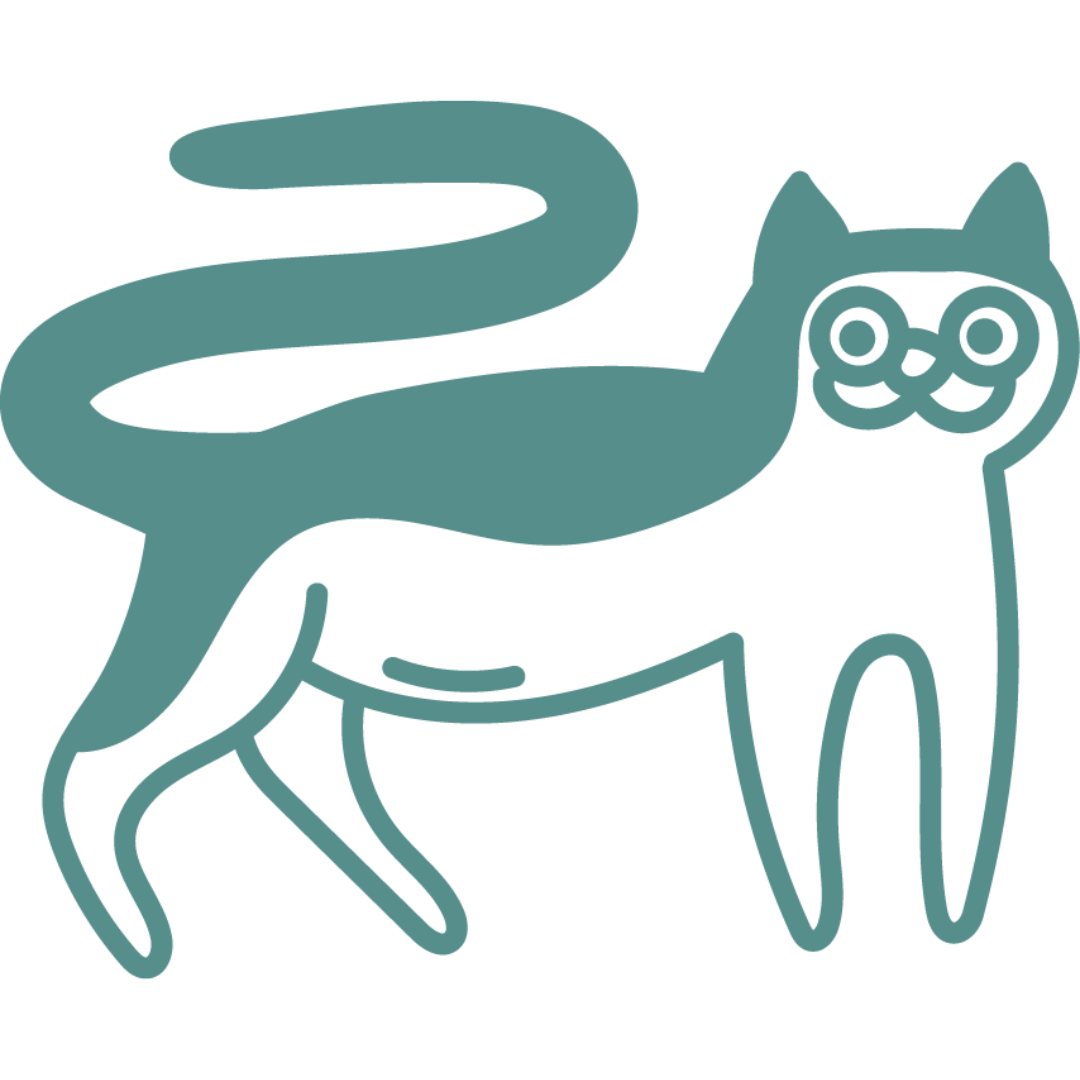
Long and Slender
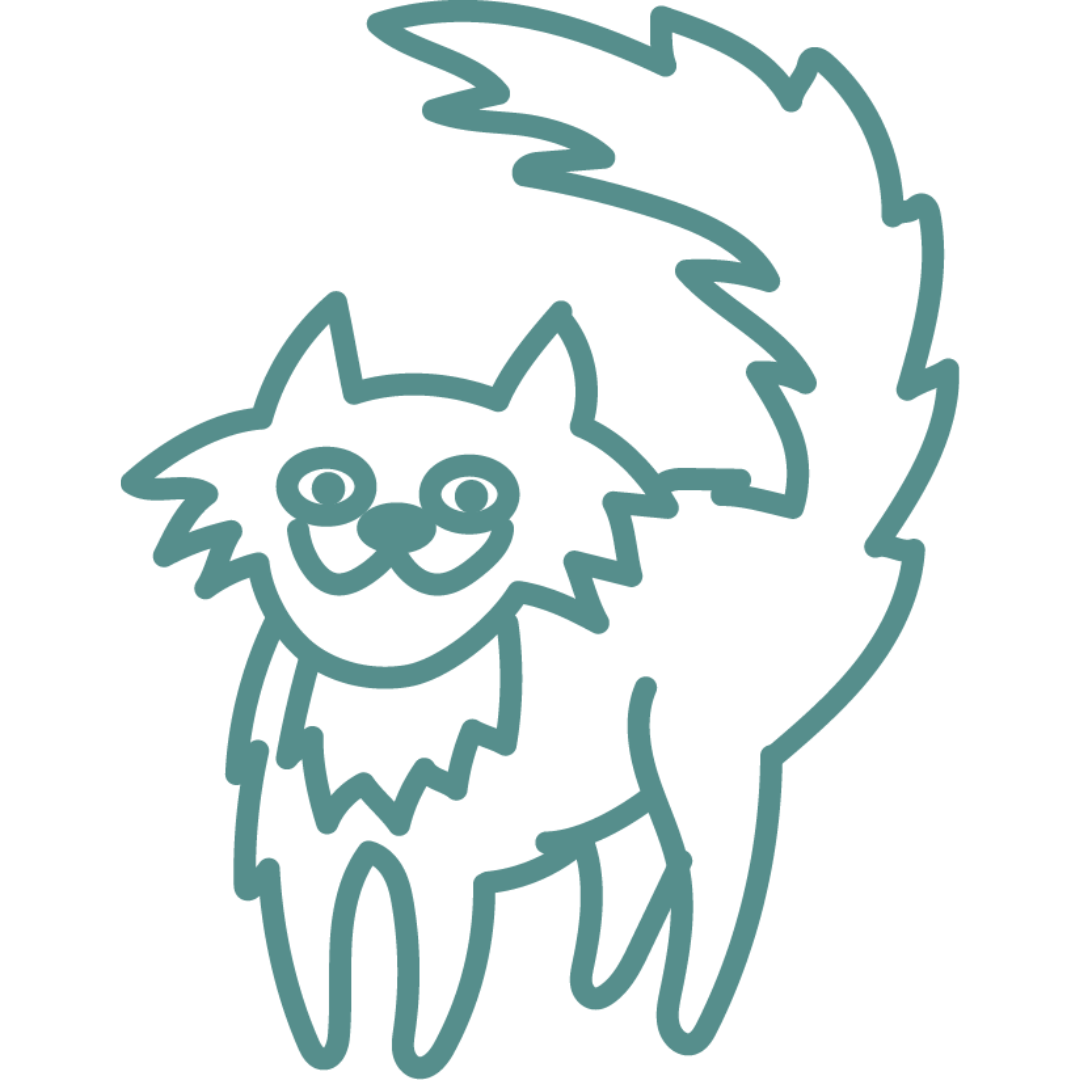
Bushy or Plume

Bobtail
Thin Tail Cat Breeds
- Oriental Shorthair - Sleek and elegant, these cats have a long, thin tail to match their refined appearance.
- Siamese - Recognized by their almond-shaped blue eyes and contrastingly dark points, they also have a thin, whip-like tail.
- Balinese - Essentially long-haired Siamese, they maintain the thin tail of their shorthaired counterparts.
- Colorpoint Shorthair - Similar to the Siamese, they possess a sleek body and a slender tail.
- Foreign White - While primarily known for their white coat, they too have a slender tail in line with their Siamese ancestry.
Bobtail Cat Breeds
- Japanese Bobtail - Recognized by their bunny-tail appearance, they have a short, kinked tail that can be fluffy or sleek depending on coat length.
- American Bobtail - A more wild appearance with a short tail, their coat can vary from short to long, with any color pattern.
- Manx - Known for having no tail (rumpy) or a very short tail (rumpy-riser), these cats are rounded with a stocky build.
- Kurilian Bobtail - Originating from Russia and Japan, these cats possess a short, fluffy tail that forms a pom-pom shape.
Cat Breeds with Plush Tails
- Maine Coon: Boasts a lengthy, tufted tail that they curl around themselves for added warmth.
- Norwegian Forest Cat: Features a substantial, lavish tail complementing their winter-ready fur.
- Siberian: Native to cooler regions, this breed is distinguished by its full, plush tail.
- Ragdoll: While semi-longhaired, their tail is distinguished by its delicate, feathery texture.
- Persian: Renowned for their extended, silky fur, their tail mirrors this with its plushness.
